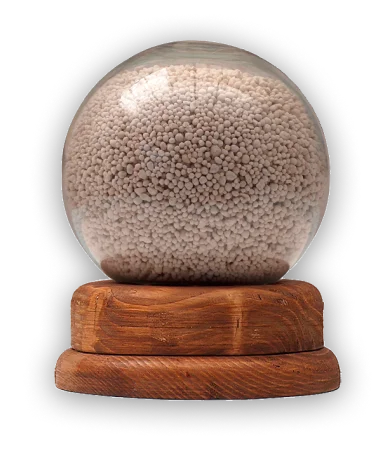PRODUCTS
Complex fertilizers with a prolonging effect





COMPLEX FERTILIZER "SUPREFOS" NP
Chemical composition:
N - 12%; P2O5 - 24%; SO3 - 30%; CaO - 11%; MgO - 1%.
Total nutrients: 78%
Fertilization rate: 19-24 kg/ha
N - 12%; P2O5 - 24%; SO3 - 30%; CaO - 11%; MgO - 1%.
Total nutrients: 78%
Fertilization rate: 19-24 kg/ha
COMPLEX FERTILIZER "SUPREAMOFOS" NP
Chemical composition:
N - 12%, P2O5 - 39%, CaO - 10-12%, SO3 - 22%, MgO - 1%
Total nutrients: 86%
Fertilization rate: 15-20 kg/ha
N - 12%, P2O5 - 39%, CaO - 10-12%, SO3 - 22%, MgO - 1%
Total nutrients: 86%
Fertilization rate: 15-20 kg/ha

COMPLEX FERTILIZER "SUPERAGRO" NP
Chemical composition:
N - 9%, P2O5 - 30%, CaO - 10-12%, SO3 - 18%, MgO - 1%
Total nutrients: 70%
Fertilization rate: 17-23 kg/ha
N - 9%, P2O5 - 30%, CaO - 10-12%, SO3 - 18%, MgO - 1%
Total nutrients: 70%
Fertilization rate: 17-23 kg/ha
Long-acting fertilizers
are an element of the "advanced" practice of applying fertilizers, which are most in demand both in the cultivation of fields, and in fruit and vegetable crops in indoor and outdoor environments, as well as in the introduction of various innovative technologies.
Long-acting fertilizers contain nutrients in a form that allows the release and absorption of nutrients by the plant to be delayed. Thus, they remain available for plant uptake throughout the growing season. This effect is achieved in different ways: controlling the solubility in water using a semi-permeable coating (capsule), slowly dissolving compounds and using inhibitors.
According to forecasts, the global market for fertilizers with extended /controlled/ increases by an average of 7% per year. The driving factors in their market are their high efficiency combined with minimal loss of elements (and reduced risk of environmental pollution), ease of use and reduced application costs.
Fertilizers with extended, controlled release can be capsules, tablets or granules depending on the starting material and their application.
Fertilizers with extended, controlled release can be capsules, tablets or granules depending on the starting material and their application.
The basic principle for the production of such fertilizers is to cover the traditional soluble forms of fertilizers with a protective film, which can be insoluble in water, semi-permeable or impermeable with pores to release the elements. This coating controls the penetration of water into the granules, the level of dissolution of the fertilizer components and makes it possible to synchronize the release of elements with the needs of the plant.